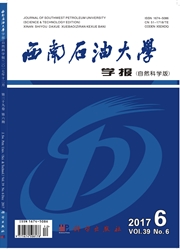

 中文摘要:
中文摘要:
作为潜在的油和煤气的水库,礁石建筑群很长时间是从石油地质学家的一个研究焦点。为在华南海的礁石建筑群的发展有有利条件;然而,他们的内部结构,进化和分布仍然糟糕被理解。在西方的华南海上在深水区域在碳酸盐站台边缘上把地震数据,内部结构和礁石建筑群的进化模式基于 2D 和 3D 详细被学习。结果显示出礁石建筑群的二种类型,即,差错控制站台边缘礁石建筑群和斜面礁石建筑群在学习区域被开发了。礁石建筑群有独立或连续的墩或透镜的地震思考,与三内部结构(即, aggrading, prograding 和后退的结构) 。在礁石建筑群的进化期间有不同生长率,导致追上来礁石,跟上礁石和快步礁石的形成。学习也表明不同站台边缘礁石建筑群有不同内部结构和分布,因为不同站台类型。这些结果可以在类似于学习区域的另外的区域被用于碳酸盐站台边缘礁石建筑群的探索和预言。
 英文摘要:
英文摘要:
As a potential oil and gas reservoir, reef complexes have been a research focus from petroleum geologists for a long time. There are favorable conditions for the development of reef complexes in the South China Sea; however, their internal structures, evolution and distribution are still poorly understood. Based on 2D and 3D seismic data, the internal structures and evolution patterns of the reef complexes on the carbonate platform margin in the deep water areas over the western South China Sea were studied in detail. The result shows that two types of reef complexes, i.e., fault controlling platform margin reef complexes and ramp reef complexes have been developed in the study area. The reef complexes have independent or continuous mound or lenticular seismic reflections, with three internal structures (i.e., aggrading, prograding and retrograding structures). There are different growth rates during the evolution of the reef complexes, resulting in the formation of catch-up reefs, keep-up reefs and quick step reefs. The study also reveals that different platform margin reef complexes have different internal structures and distributions, because of the different platform types. These results may be applied to the exploration and prediction of carbonate platform margin reef complexes in other areas that are similar to the study area.
 同期刊论文项目
同期刊论文项目
 同项目期刊论文
同项目期刊论文
 期刊信息
期刊信息
